The Peace Lily is a beautiful and practical houseplant. They help remove pollutants from the air within your home, reduce mildew growth in bathrooms by soaking up extra moisture, and are just generally very appealing plants to look at. However, they are known for being very delicate, which makes caring for them a bit challenging, and home gardeners are constantly worried about overwatering or underwatering peace lilies. In this article, let’s talk about how to save overwatered peace lily.
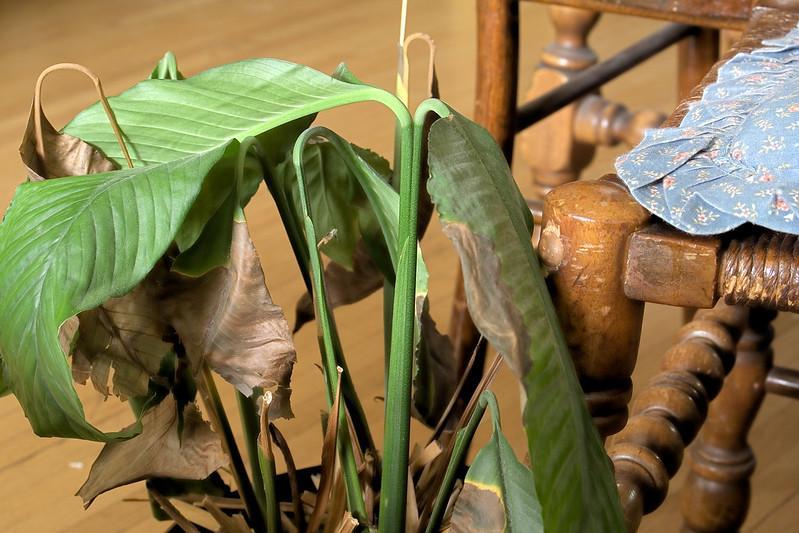
Overwatering is not advised while caring for peace lilies, as this reduces the available oxygen to the plant.
Overwatering peace lilies is bad for two major reasons: the plant’s inability to absorb nutrients and the possibility of fungal growth in roots. And the treatment of overwatered peace lilies depends on the condition of the roots.
If the roots are not rotten, you can simply place the plant in sunlight and stop watering it for a few days. However, if the roots are rotten, you’ll have to prune the damaged roots before repotting the plant.
So, read on if your peace lily is also wilting because of overwatering. In this article, we will tell you everything there is to know about how to save an overwatered peace lily plant.
Overwatered Or Underwatered?
How would you tell whether your peace lilies are getting too much or too little water? Well, there are a lot of different ways to find out. Take, for example:
Check The Soil
If you see that your plant is beginning to wilt, you should investigate the soil to determine whether or not it is receiving too much water. Plants that have been overwatered have too damp soil, whereas plants that have too dry soil have been underwatered.
Check For Browning edges
Another indicator that can help determine whether or not your peace lily is being overwatered or underwatered is whether or not its leave edges are becoming brown. If the browning leaves on your peace lily are dry and crispy, this indicates that the plant has been underwatered. On the other hand, if the leaves are mushy, the plant is being overwatered.
Check For Yellowing Leaves
Yellowing of peace lily leaves is another sign that the plant has been overwatered. However, the yellowing of the leaves is a sign of both overwatering and underwatering of plants.
The level of moisture in the soil will therefore be the deciding element in determining which one of them is the source of the issue.
Check For Foul Smell
Smell the soil at the base of the peace lily plant. The presence of a foul smell coming from the soil is an indication that the roots of the peace lily are decaying. This rotting is brought on by the proliferation of fungi in the soil that is brought on by the presence of too much water. To conclude, if your peace lily potting soil has a foul odor, it has been overwatered.
Check For Slow & Stunted Growth
The primary cause of the sluggish and limited growth of the plant is that it is lacking in essential nutrients. This may occur if the plant is over- or under-watered. However, you can determine the actual cause of the problem by analyzing the state of the soil.
If the plant’s soil is completely saturated with water, this is a sign that it has received an excessive amount of water. While a plant that has not received enough water will have dry soil.
Related: Here Is Why Your Peace Lily Flowers Are Turning Brown & How To Fix It Fast!
Why Overwatering Is Bad For Peace Lily?
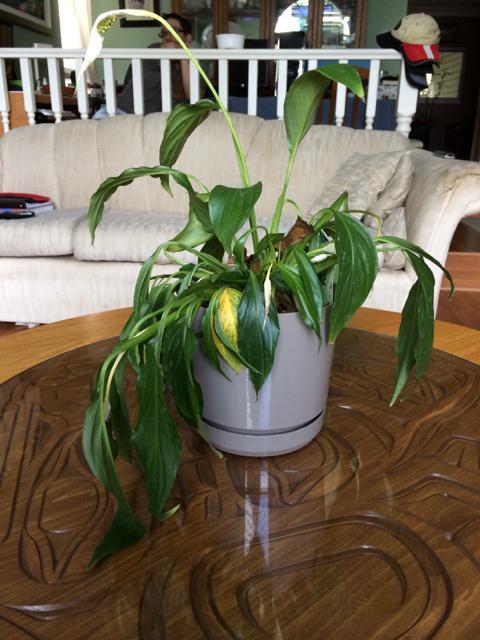
In soggy soil, oxygen decreases, making it harder for the roots to absorb nutrients.
A common misconception among gardeners is that moist soil is the same as wet soil. Even if it is possible to cultivate peace lilies in water, the soil in which they are planted should have a high moisture content for optimal growth. But wet soil, on the other hand, is harmful.
When there is excessive water in the ground, the only plants that can survive are those that are adapted to life in water, such as the mangrove. If you give your peace lily too much water, the soil will become saturated, making it difficult for the roots to take in oxygen. If the roots are unable to breathe, they won’t be able to function normally.
As a direct consequence of this, the plant will be unable to take in the nutrients that are present in the soil. The overgrowth of fungi is another risk associated with excessive watering. There are many different kinds of fungi, and every one of them has the potential to cause root rot in houseplants. The following are some examples of root-rotting fungi:
Rhizoctonia
This fungus will grow at the bottom of the stems, roots, and leaves of the plant. In extreme circumstances, the sunken growth at the base of the plant can potentially cause the stem to break and die.
Phytophthora
It leads to the development of wilted, yellow leaves that eventually perish. Also, in case of an infestation, the roots gradually go from white to black, brown, or gray in color.
Pythium
This fungus causes the decay of roots and may need to be identified through laboratory testing. The symptoms resemble those of a peace lily plant that has been overwatered for the most part.
What Causes Overwatering Of Peace Lily?
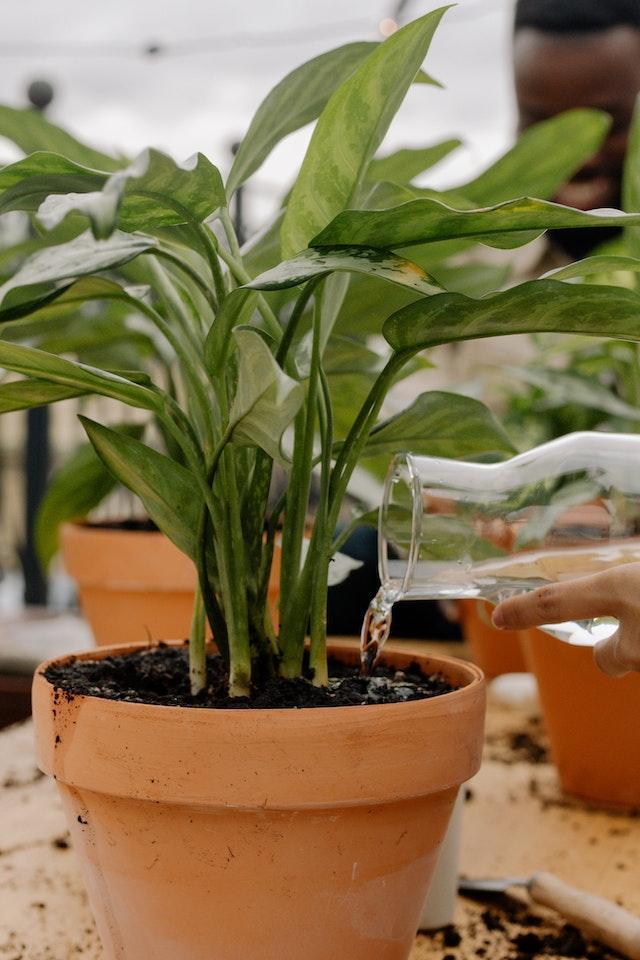
In winter, peace lilies grow slowly and take longer to dry out, making them more susceptible to overwatering.
The following are some of the possible explanations for why you are overwatering your peace lily plants. To further ensure that your peace lily plant does not receive excessive water, you should avoid the following practices.
Overwatering
Let’s begin with the simplest and most straightforward explanation. When it comes to watering your peace lily, you shouldn’t stick to a set schedule. If the peace lily takes an excessive amount of water from the soil, it will cause the leaves to swell, which is one of the first symptoms that the plant has been overwatered.
In addition to this, the roots begin to suffocate. These weaker roots are then attacked by bacterial or fungal development, resulting in root rot. Thus, you should hold off until you can feel that at least 50 percent of the earth is dry before you dig into it.
This could take as little as a couple of days or as much as a couple of weeks, depending on a number of different factors.
Improper Pot Size And Material
A common problem with growing a little plant in a large container is overwatering it. Because of this effect, the ground stays damp for significantly longer periods of time.
In addition, if the container is constructed of plastic or another comparable material, it will prevent evaporation, which will result in increased moisture. Therefore, we recommend using smaller pots that are made of terracotta and wood.
Due to their porous nature, Terracotta pots allow the soil to gradually lose its moisture content through the walls of the pot, thus preventing overwatering.
Forgetting To Empty The Drip Tray
If water is allowed to pool at the bottom of the container, root rot will quickly spread throughout the plant. Therefore, as soon as you have finished watering, you should promptly empty the drip tray or cache pot, ensuring that all the additional water has drained out of the container.
Seasonal Changes
It is necessary to adjust the watering schedule based on the season. For instance, when growth is sluggish and the soil takes longer to dry out after being watered in the winter, peace lilies are more likely to be overwatered.
Related: Peace Lilies: Top Reasons Why Their Leaves Turn Brown and How To Fix Them
How To Save Overwatered Peace Lily
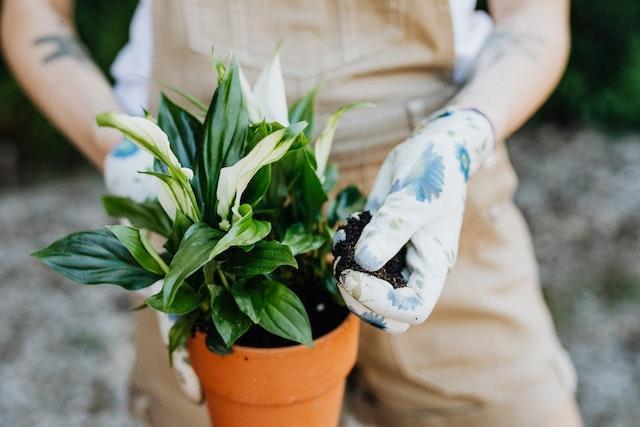
There’s no point in giving your plant any more water if you already know it’s been overwatered.
If you want to bring a peace lily to life, you first need to hurry up and move the pot to a place where it will get a lot of sunlight. After that, you should hold off on watering the plant until the treatment is finished. This will assist in the drying out of the wet soil and the restoration of some oxygen to the plant. If you have done this, you can move on to the next phase of the treatment.
Getting Ready
To treat an overwatered peace lily, you’ll need some tools. Ensure you have all the tools handy before treating your plant. These tools include
- Pruning scissors (sharp kitchen knife can also be used)
- Rubbing alcohol (can be easily found in a first aid kit)
- A bucket of water
- Hydrogen peroxide (If available! Otherwise, you can use rubbing alcohol)
- 2 Pieces of cloth/rug
- A new pot with proper drainage holes
- Last but not least, a pair of gardening gloves
Inspecting The Plant
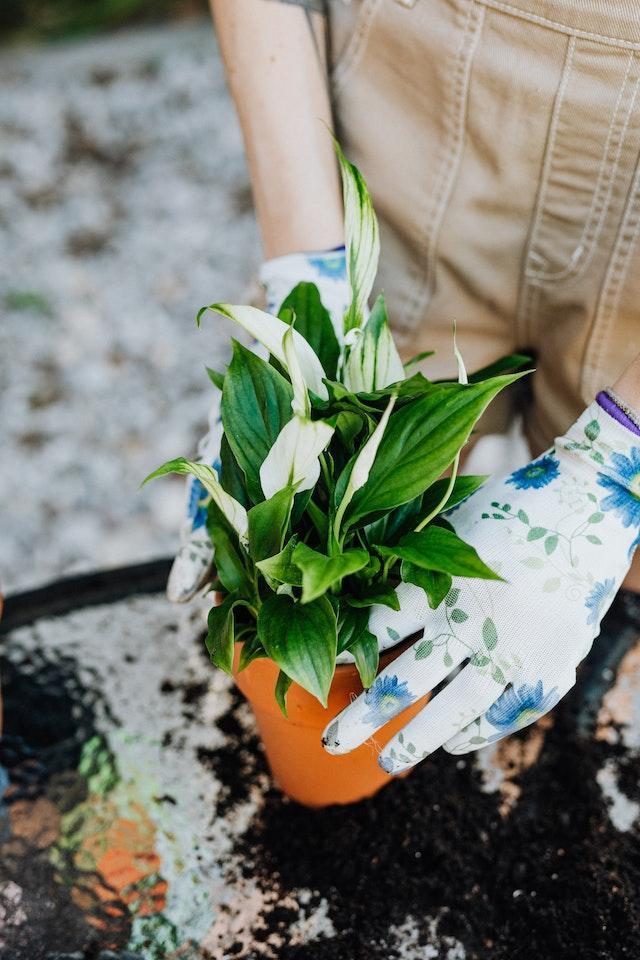
If you think your peace lily is overwatered, take the plant out and examine its roots.
Inspecting the peace lily plant is the first step in the treatment process. First, the peace lily must be removed from its container to facilitate the inspection.
We’ll walk you through everything step by step; all you have to do is follow the directions.
- Rub some rubbing alcohol on the blades of the pruning shears or knife.
- Put on your gardening gloves and clip the dead leaves and rotten parts with the disinfected scissors or knife. Wearing gloves is important because the calcium oxalate found in the sap of peace lilies can irritate some people’s skin.
- Now take the peace lily out of its pot, shake off any excess dirt, and place the roots in the water bucket so they can be washed.
- After the roots have been cleaned, you can examine them to see if they are damaged.
At this point, how the treatment will proceed will depend on the condition of the roots.
If The Roots Are Not Rotten
It shouldn’t be too difficult to bring a peace lily to life as long as its roots haven’t gone bad. Just follow the instructions that are given below.
Changing The Pot
Change the pot with a smaller one that also has some holes for better drainage. This will allow the roots to take up less space and prevent water from collecting in the soil.
Changing The Potting Mix
Refill the container with fresh soil and mix into it an equal amount of perlite and coconut coir together with the potting soil. This will help the soil absorb more water.
Changing The Location Of The Plant
Transfer the container to a more exposed location, where it will be able to receive an increased amount of air and sunlight. A reduction in both the air’s and the ground’s humidity will result from increased airflow’s efforts.
Change Watering Routine
Reduce the frequency with which you water the plant. When it comes to watering the peace lily, a good rule of thumb is to wait until the top inch of the potting mix has become completely dry before doing so.
If The Roots Are Rotten
If, on the other hand, the roots of the peace lily are rotted, it will be challenging to bring the plant back to life. But there’s no need to get all up over it. We will take care of everything for you. Simply following these instructions will ensure the survival of your peace lily.
Cleaning The Roots
Use only clean flowing water to wash away the filth and thoroughly clean the afflicted roots. Also, while washing the roots, use your hands to remove any brown, mushy, or decaying roots from the bunch.
Pruning
Clean and disinfect the scissors by soaking them in an alcohol solution. Then, cut off the healthy roots directly above the affected area to get rid of the decayed portion of the roots. Also, when making the cuts, do it in a diagonal pattern to encourage the roots to regenerate.
Preparing The Pot
Take out all of the soil from the plant’s container. To clean the pot, you can use a bleaching solution or hydrogen peroxide, which is 3%. You might also try rubbing alcohol for this purpose.
Repotting
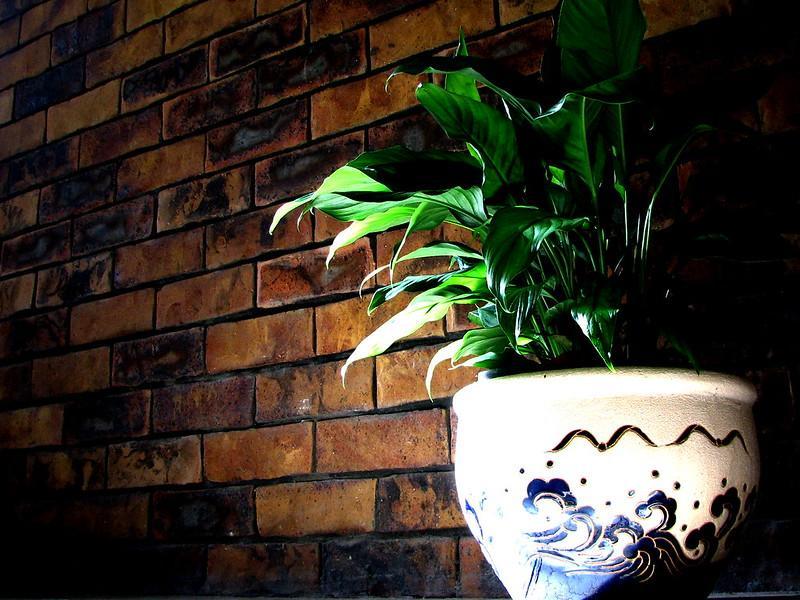
After you are done treating your peace lily for overwatering, it is time to repot your plant.
Be certain that the roots of the peace lily do not have any fungus on them before repotting the plant. Also, the remaining healthy roots should be dipped in a fungicide solution to eliminate the remaining root rot fungus. At last, refill the container with potting mix and give the soil a few light taps with your fingertips to ensure that it is well distributed around the Peace Lily.
Conclusion
In conclusion, you now realize that overwatering your peace lily is a significantly more serious threat that can ultimately prove to be deadly. To get it back in working order, you will have to put in a lot of effort. Therefore, it is best to follow the care and prevention instructions in order to enjoy the beauty of a peace lily right in the comfort of your own gorgeous house.
Frequently Asked Questions
How long does it take a peace lily to recover from overwatering?
Depending on how quickly you heal, this healing process could take anywhere from two to three weeks. So, be patient with yourself as the healing process gradually unfolds. Then, allow your plant the time it needs to recover: If you have tried all you can think of to help your sick plant, be patient and wait between a week and ten days.
What does an overwatered peace lily look like?
An over-watered peace lily shows yellowing and drooping of the leaves as the first sign. Leaf edema can also develop if the plant is overwatered on a regular basis for an extended period of time. Edema is a physiological disease that occurs when a plant’s roots take in more water than they can utilize or lose through transpiration.
Can an overwatered plant be saved?
Yes, you can save your overwatered peace lily plant if you know what to do. The first thing you need to do to save your plants after you’ve overwatered them is evaluate the damage level they’ve sustained. In addition, in order to save a houseplant that has been overwatered, you need to act quickly before the plant passes away completely.
Why is my peace lily drooping even after watering?
The leaves of a peace lily will remain drooping even after the plant has been watered if there is too much moisture around the roots. However, it can also happen due to under-watering. If you underwater your plant, the stem, and leaves will droop because they are not receiving adequate water and nutrients from the root system. This causes the stem to become weak and brittle.
How do I know if my peace lily has root rot?
Infected peace lilies will exhibit symptoms such as browning at the leaf tips, yellowing and drooping of the leaves, and mushy, rotting roots. Root rot is a fungal disease that is caused primarily by overwatering plants, having a poor drainage system, and using the incorrect soil mix. Your plant’s growth may also be stunted, and its leaves may fall off if it has root rot.
How often should a peace lily be watered?
The Peace Lily likes to be watered once a week, but if it needs more water, its leaves will begin to droop. The soil around your peace lilies should be kept consistently moist, so a good soaking once a week should do the trick. However, you can reduce your watering frequency to every other week during the colder months.
How do you dry out an overwatered plant?
Putting the plant in an area where the temperature and humidity are just right for water evaporation is one way to speed up the process of drying up soil that has been overwatered.
For example, put the plant near a window if you want it to dry out more quickly after you’ve overwatered it. However, direct sunlight should be avoided at all costs, and the pot should be kept at least 2 feet away from the glass.
Sources For Further Reading
Peace Lily. Clemson University Cooperative Extension Service. (2022). Retrieved 22 October 2022, from https://hgic.clemson.edu/factsheet/peace-lily/#:~:text=Culture,and%20edges%20will%20turn%20yellow.
Peace Lily – University of Florida, Institute of Food and Agricultural Sciences. (2022). Retrieved 22 October 2022, from https://gardeningsolutions.ifas.ufl.edu/plants/houseplants/peace-lily.html
Care of Peace, Lilies. South Dakota State University Extension Service. (2022). Retrieved 22 October 2022, from https://extension.sdstate.edu/care-peace-lilies
Editor’s Recommendations
Identification and Control of Rust Fungus by Natural and Chemical Ways
Giving Your Plants a New Home: How to Repot Your Plants
Golden Leaves? 5 Reasons Why Your Majesty Palm Is Changing Color







